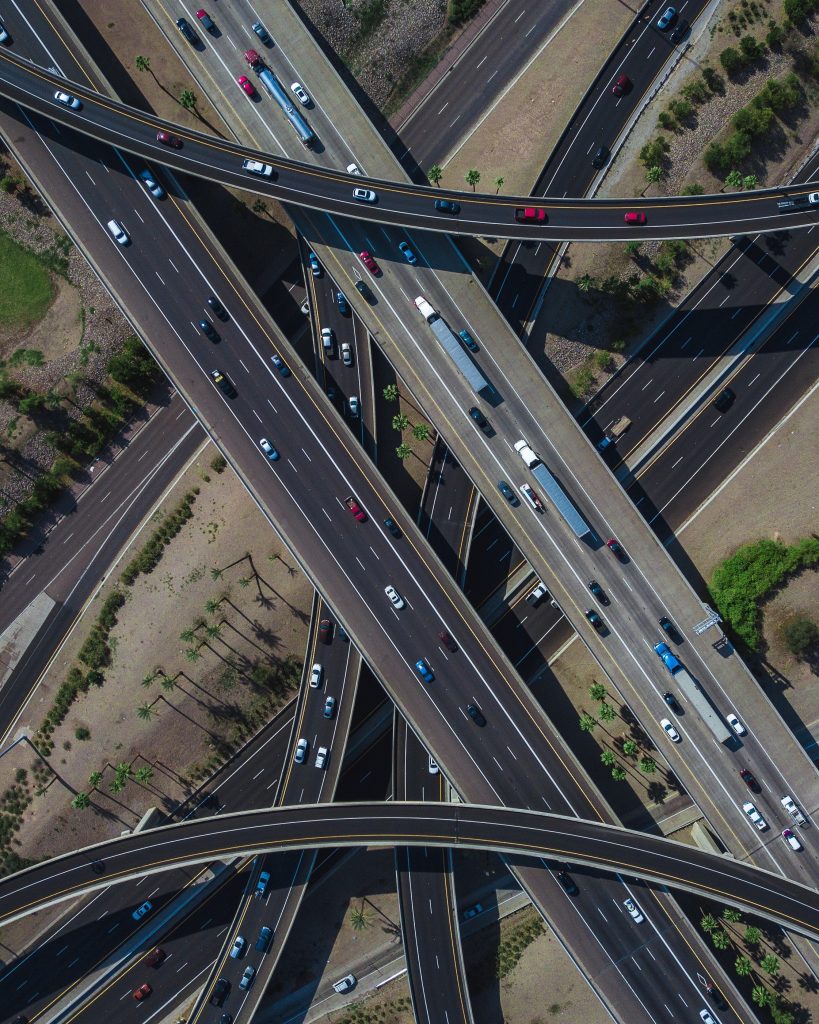The transport sector accounts for almost 1/4 of the EU’s total GHG emissions, and decarbonisation of the sector is therefore crucial. The use of electric powered transport is emerging as the most viable near-term solution to reduce CO2 emissions road transport. The falling costs of batteries means that Battery Electric Vehicles (BEVs) for personal use are becoming more cost competitive, so large potential for Electric Road Systems (ERS) but with substantial uncertainties in costs.
Under the Paris Agreement, the EU agreed to reduce its domestic greenhouse gas emissions by 40% below 1990 levels by 2030. The transport sector accounts for almost one-quarter of the EU’s total greenhouse gas emissions, and decarbonisation of the sector is therefore crucial if the target is to be met.
Compared to other areas of the economy, road freight transportation (the transport of goods by bulk) will be particularly difficult to decarbonise. This is due to not only the dominance of fossil fuelled technologies, but also the link between economic growth and the demand for transport. Following the current economic growth trend, emissions in the sector are set double by 2050. More than half of this projected emission growth is a result of an anticipated threefold increase in freight activity
The use of electric powered transport is emerging as the most viable near-term solution to reduce CO2 emissions road transport. The falling costs of batteries means that Battery Electric Vehicles (BEVs) for personal use are becoming more cost competitive. While research and development of BEV trucks is progressing, scholars still argue that BEV trucks may not be feasible for long-range heavy trucks, as heavy freight vehicles are more energy demanding than cars due to the weight of the vehicle and its cargo.
Our report focuses on an alternative route to electrification of freight through Electric Road Systems (ERS) and investigates how this can be applied at scale in Europe. An Electric Road System allows a truck to operate as an electric vehicle without carrying a heavy battery. Several options exist to electrify roads and we study the approach of using overhead power lines, which the truck is able to connect to via a pantograph that is attached to the vehicle – a similar arrangement to an electric train.

Once connected to the overhead cable a truck it can draw power from the electricity grid, enabling long range and reducing the need to carry fuel or heavy batteries. The truck can connect and disconnect to the overhead wires at any point whilst driving, for example if it wishes to change lanes. When the truck is disconnected (i.e. moves onto a non-electrified road) it can be powered by battery, or revert to a combustion engine.
The application of ERS would require investment in significant new road infrastructure. If implemented at scale, it would contribute to decarbonisation, lower local air pollution and make for a more energy efficient heavy freight sector. ERS therefore has the potential to be a game changing technology, as it is among the few options that could allow us to meet the EU climate-policy ambition. It is therefore an important area to study.
The aim of our report was to study the conditions for ERS in European countries and to assess the costs and uncertainties in deploying the technology at the European scale. This is achieved by investigating questions surrounding how ERS implementation challenges are expected to vary across the EU, the infrastructure cost and other potential impacts.
Method
A scenario approach was applied to analyse the cost of implementing ERS across the EU from 2020 to 2050. Drawing from the TRANSrisk Swedish case study, we defined that 30% of freight transport activity will be covered by ERS in 2050. For Sweden, this constitutes all trips that are above 300km in length and that are conducted by trucks that have an average load of 20 tonnes or more. This represents journeys that mainly occur on major road networks.
The same share (30%) of freight transport activity for all EU countries was applied to compare relative challenges and costs to reach the same level of penetration of ERS technology across EU. We used this due to both limited resources and lack of data, as more research is needed to study detailed freight patterns and optimal sizes of deployment in each EU country. This leaves an opportunity for future research to investigate detailed national conditions, specific for each country.
Implementation challenges for ERS
Roads

The scale of road infrastructure needed to reach the 30% target was found to vary substantially across the EU. The reason for this is that countries vary by size, population and level of urbanisation. This leads to differences in freight demand and road coverage.
Smaller and more densely developed countries, by necessity, will use the road more efficiently and so would have higher volume of traffic in a given stretch of road. This means that there is a differing need for the length of roads with ERS infrastructure in order to electrify a given share of road freight activity.
Electricity
Carbon reduction strategies for many countries involve expanding the use of low carbon electricity in the heat and transport sectors. Increased competition for electricity by different sectors therefore presents a challenge to many countries.
The challenge also varies across the EU due to the differing capacity of power distribution grids. There are high uncertainties within this factor as costs to improve grid infrastructure that supplies ERS also varies depending on whether peak or average loads are being analysed. Costs also vary due to the distances that new power lines must cross, which are dependent on how large and densely populated a country is.
Other factors influencing the final cost includes whether smaller or larger battery packs are used in the trucks, and the differing costs of using ERS and the power grid off peak. All these factors were identified in this report but much more research is needed to design and assess different options for ERS systems.
Vehicles
Variation in the types of trucks operating in EU countries is much less pronounced than the variation in infrastructure conditions. The additional cost for trucks to use ERS is largely the same between vehicle models as the equipment necessary, such as the pantograph, does not vary with the truck’s size. This means that the added cost per truck in similar across countries.
Estimates comparing ERS equipped trucks to those with a combustion engine suggest that costs would be 26% higher for a first ERS system deployed in the 2020s, but we estimate that this gap will shrink to 17% by 2050. This is mainly due to foreseen cost developments of the electric or hybrid electric drivetrain used in the truck, including the active pantographs used on ERS equipped trucks.
Conclusions
A key finding from this investigation is that in many EU countries, the system infrastructure cost should be lower than for Swedish conditions, where ERS has been found to be competitive with internal combustion engines. Variations in the cost of implementing an ERS scenario across the EU is largely driven by differences in road system lengths that needs to be equipped with ERS and many EU countries could have more efficient deployment than Sweden.
Despite higher up-front cost, employing ERS will likely have small positive impacts on the EU economy, and result in reduction in CO2 emissions if supplied with renewable energy. However, some EU member states, and some specific economic sectors, might experience small negative impacts depending on the size of their industrial base linked to the current internal combustion engine technology.
The most uncertain factors are grid infrastructure development and integration costs. A restraint in some EU countries is the challenge of adding sufficient low carbon electricity generation, as during the coming transition of European electricity generation a range of sectors may compete for carbon neutral electricity.
Our study finds a large potential for ERS in EU, but with substantial uncertainties in costs that need to be further explored. This can be achieved through, for example, larger pilot projects and increased international collaboration.
About this article
This article is based on the TRANSrisk’s deliverable D6.4 ‘Identifying Innovation Policy Options in Transition Pathways’ second chapter ‘Electric Road Systems and the European Union’. This chapter was written by Björn Nykvist, Georgia Savvidou, Timothy Suljada of Stockholm Environment Institute and Annela Anger-Kraavi and Malin Berg von Linde of Cambridge Economics. The D6.4 deliverable is available on request. This article was written by Ellie Leftley and Ed Dearnley at SPRU (Science Policy Research Unit) at the University of Sussex. For more information about TRANSrisk please visit our website.
Photo credits
Photo 1: Demonstration of an Electric Road Vehicle. Photo taken by Björn Nykvist.
Photo 2: Pantograph. Photography licensed under Creative Commons CC0.
Photo 3: Photography licensed under Creative Commons CC0.
TRANSrisk
Project details
- Project title: “Transitions Pathways and Risk Analysis for Climate Change Mitigation and Adaption Strategies” (TRANSrisk)
- Funding scheme: European Union Horizon 2020 Programme (EU H2020, grant agreement no. 642260)
- Duration: 3 years (1 September 2015 – 31 August 2018)
- Project coordinator: Science Policy Research Unit, University of Sussex, United Kingdom
- Project website: www.transrisk-project.eu



